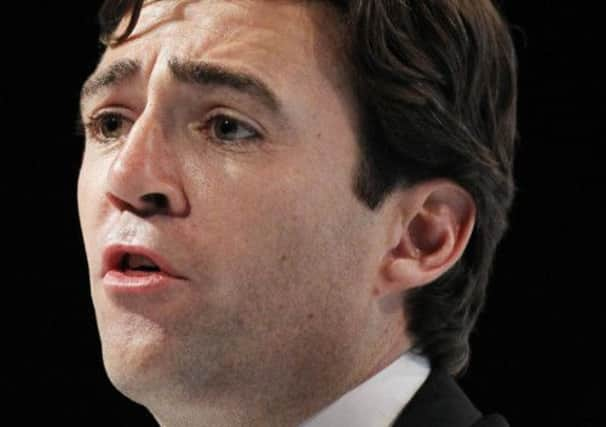Ambulances turned away from A&E units as pressures mount


Figures obtained by Labour show a 24 per cent increase in the number of hospitals forced to turn away patients in need of emergency care.
The party yesterday held an emergency A&E summit with NHS staff which heard claims from a Yorkshire paramedic that as many as half of 999 incidents were being dealt with by private ambulances.
Advertisement
Hide AdAdvertisement
Hide AdThe regulator Monitor today announces a major review into the closures of walk-in centres – including some in Yorkshire – which have been linked to increasing demand on A&E.
House of Commons library data disclosed that there were 357 occasions when hospitals in England were no longer able to accept any new patients brought in by ambulance – apart from cases deemed to be life threatening – in 2012-13, up from 287 in 2011-12.
On Bank Holiday Monday, the Royal Liverpool Hospital was forced to divert patients. Hospitals in Essex, Kent and London have also been forced to turn ambulances away in recent weeks. According to official guidance, A&E “diverts” – where there is not enough space or staff to cope with extra patients – should only occur as a last resort.
Yesterday, Leeds paramedic Debbie Wilkinson, who chairs Unite’s national ambulance committee, claimed private ambulances were increasingly being used to deal with 999 incidents.
Advertisement
Hide AdAdvertisement
Hide Ad“We usually use them at Christmas and New Year to help with the pressure – we’ve just continued to use them from then,” she said. “Some days, as many as 50 per cent of 999 calls are being answered by private ambulances. We can’t guarantee who is turning up on your door is exactly who should be. So really it becomes a postcode lottery when you ring 999.”
Shadow Health Secretary Andy Burnham said: “A&Es across the country are in crisis and the pressure shows no sign of abating.
“Today we have yet more evidence that the situation has deteriorated significantly on this Government’s watch, with ambulance diverts up by a quarter in the last year. This is a crisis of their own making.
“Labour is today calling on the Health Secretary to suspend all planned A&E closures pending a personal review.
Advertisement
Hide AdAdvertisement
Hide Ad“If convincing evidence can be produced to show lives can be saved by closing A&Es, Labour will not oppose them. But, as the pressure builds, the case is changing and the Health Secretary must err on the side of caution.”
The Department of Health claimed the NHS was meeting a target to see 95 per cent of all casualties within four hours.
A spokesman added: “However, we know that over the past few years A&E has been put under increasing pressure because of rising demand.
“That is why this Government is looking at how we address the long-term problems facing A&E, something the Labour Party failed to do while they were in office.”
Advertisement
Hide AdAdvertisement
Hide AdThe regulator Monitor said it will assess whether the closures of NHS walk-in centres were “in the best interests of patients”.
Walk-in centres have closed in Bradford, Barnsley and Leeds, with hours cut at other centres in the region as others have seen demand for care soaring.
The review was welcomed by NHS Partners Network, an alliance of commercial and not-for-profit healthcare providers, which said it expected Monitor to use its powers to prevent further closures.
Chief executive David Worskett said: “We have become increasingly concerned that in some areas, walk-in centres are being closed or are under threat of closure even though they may be providing valuable access to primary care at times of day, or for groups of people, for whom the much more restricted opening times of conventional GP practices are too inflexible.
“We also believe that in some situations walk-in centres – or the absence of them – may be a factor influencing demand on A&E departments.”